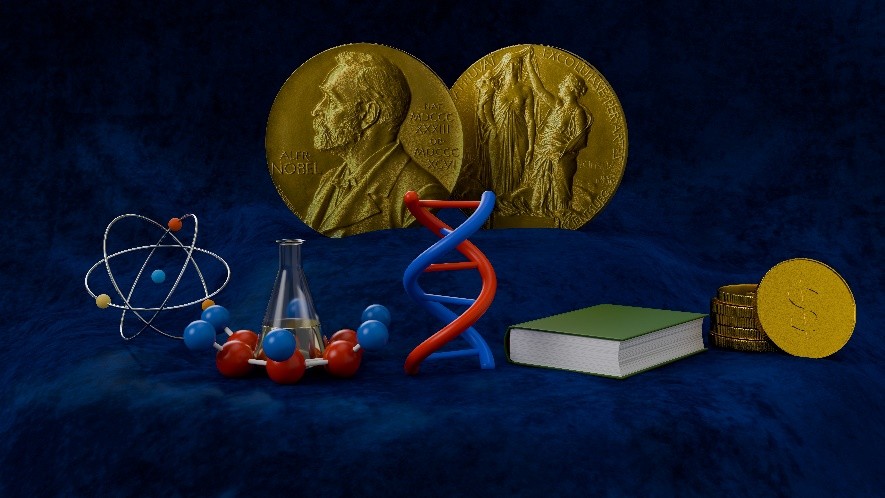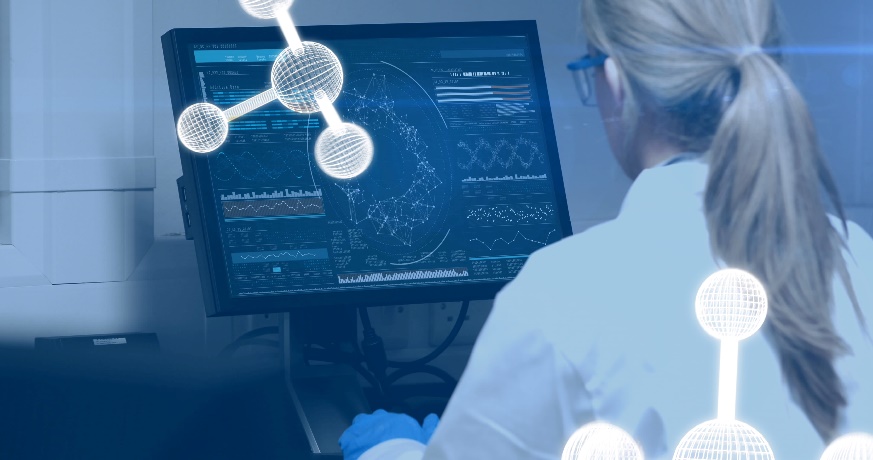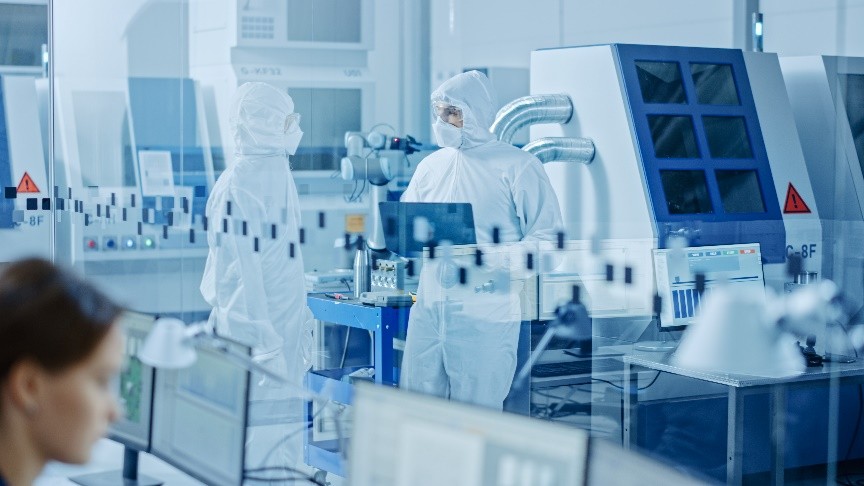
The mystery of life is not purely a biological problem, it is not isolated. To study such a complex life process, it requires the use of biology, chemistry, physics, mathematics, computers, and so on.
Human researchers are currently unmatched by AI in terms of sensitivity to problems, and can quickly embrace new technologies to assist research.
On October 9, 2024, local time, in Stockholm, Sweden, members of the Nobel Committee on Chemistry, John Agust, Permanent Secretary Hans Eilgren, and Chairman of the Nobel Committee on Chemistry, Heiner Linke, presented this year's Nobel Prize in Chemistry to David Beck, Demis Hassabis, and John Kemper at the Royal Swedish Academy of Sciences, in recognition of their significant contributions in using machine algorithms to interpret protein structures.
Analyzing protein structure has been a difficult problem for scientists for 50 years. Proteins are the cornerstone of life, not only composing the basic structures of our body's organs and tissues, but also widely participating in various life processes as hormones, biological signaling substances, antibodies, and so on. Proteins are formed by folding long chains of 20 amino acids, just like how the same paper can be folded into a crane or a box. The structure formed by different folding methods determines the function of proteins.
After being produced by cells, amino acid chains quickly and spontaneously fold into proteins with specific structures. Scientists later discovered that the "command" that guides folding is hidden within the sequence of amino acid chains, thus opening up scientific exploration of the relationship between amino acid sequences and protein structures.
The research on neural networks in computer science began to develop around the same time as this field. The idea of this algorithm is to establish a brain like computing system, where each neuron node can receive signals from other nodes and calculate whether to send information to the next node. In such a network, information can ultimately form recognition of input information patterns through multi-level neural weighting calculations. Scientists have long attempted to use this technique to calculate the relationship between amino acid sequences and protein structures, but progress in both fields has been slow.
After 2010, there was a significant breakthrough in neural network technology, with the number of layers of neurons increasing from 2 to hundreds or even thousands, transitioning from shallow networks to "deep learning" and "artificial intelligence" (AI), capable of completing complex tasks such as dialogue, image recognition, and generation. At the same time, through the continuous efforts of experimental biologists and the invention of observation techniques such as cryo-electron microscopy, the number of protein structures analyzed has skyrocketed from a few to 140000, providing a data foundation for deep learning.
The complex protein structure problem has finally reached the moment of "artificial intelligence". Hassabis and Jumper from Google have created the AlphaFold series of algorithms. Through continuous iteration, AlphaFold 2, born in 2020, has been able to predict 200 million protein structures known to humans with over 90% accuracy based on amino acid sequences. Baker, a pioneer in protein computing, not only created various prediction algorithms, but also pioneered the "de novo design" of proteins without existing protein structure references, making significant contributions to fields such as drug design.
This year is the "AI Year" of the Nobel Prize, and both the Physics Prize and the Chemistry Prize have been awarded to AI related work. Does this mean that AI can already replace the work of scientists?

Why did protein research win the Chemistry Prize instead of the Physiology or Medicine Prize, while AI was able to win the Chemistry Prize? The issue of life essentially involves interdisciplinary research, and powerful tools like AI can help people explore.
The mystery of life is not purely a biological problem, it is not isolated. To study such a complex life process, it requires the use of biology, chemistry, physics, mathematics, computers, and so on.
Take protein as an example. The basic unit amino acids that make up proteins are composed of one amino group, one carboxyl group, one hydrogen atom, and one side chain group. The difference between different amino acids lies in their different side chain groups, which affect their interactions and functions in protein structure. When two amino acids meet, the carboxyl structure of one will react with the amino group of the other, forming a peptide bond that connects them together, thus forming a polypeptide chain. This is the 'primary structure' of proteins.
Peptide chains form specific 'secondary structures' in a helical or folded manner, which can then form more complex tertiary structures through connecting structures. Just as origami involves various physical and material laws such as paper hardness and force application, the folding of peptide chains is also determined by the interactions between atoms and molecules in the amino acid sequence, such as hydrogen bonding, hydrophobic interactions, ionic bonds, van der Waals forces, etc.
To study this process, it involves physical and chemical knowledge at the microscopic level, such as force fields [QS1]. Minimizing energy is an important clue in studying protein folding. Just like 'water flows downwards', protein folding also tends to form the state with the lowest energy. Therefore, scientists can simulate protein folding and dynamic behavior by calculating the intermolecular interactions.
From this perspective, it is possible to award prizes in life sciences, chemistry, and even physics for research on protein structure problems. With the emergence of AI, the accuracy and efficiency of protein prediction have been unprecedentedly improved, solving major scientific problems that have plagued chemists for many years and becoming a powerful tool in the hands of researchers. The award is well deserved.
With these prediction tools, scientists can quickly calculate the fine structure of proteins based on amino acid sequences, greatly improving work efficiency. Additionally, AI can efficiently design and validate new protein structures, aiding in the development of new drugs and the construction of artificial life forms.
Predicting advanced structures from protein primary structures is an important issue of great concern to chemical biologists, structural biologists, and physical chemists, AI has indeed solved it to some extent.
The protein structure that painstakingly deciphered over several years was quickly and accurately predicted by AI, which made many structural biologists feel uncomfortable. However, AI still has a long way to go in the field of protein structure prediction.
The ultimate problem of protein structure prediction has not yet been solved, and AI algorithms have limited help in fully understanding the underlying biological laws. The essence of large models like AlphaFold is to form probabilistic predictions by comparing existing large amounts of amino acid sequences and protein structure data, discovering more likely structures. However, the understanding of the scientific laws behind the protein folding process is still limited.
Although the accuracy of AI in predicting protein structure is currently high, it is not entirely accurate. For proteins, a few percent difference in sequence may indicate completely different functions. Currently, AI cannot achieve such precision and still needs to rely on experimental observations to analyze.
In addition, the performance of AI in understanding the dynamic structure of proteins and their interactions is also unsatisfactory. Proteins are dynamic in solution and undergo complex interactions with each other. In addition, there are a large number of 'naturally disordered proteins' in cells that do not have normal structures, but they play important roles. These AI cannot predict them well yet
The achievements of AI are based on decades of effort by traditional structural biologists. Without the structural data they obtained through experimental analysis, AI cannot be trained
In addition, human researchers are currently unmatched by AI in terms of sensitivity to problems and can quickly embrace new technologies to assist research. From X-ray crystallography, to cryo-electron microscopy, and now to AI, upon careful observation, excellent scholars have not been eliminated by technological updates, but have been able to quickly embrace new technologies.
For humans, the logic and intuition behind knowledge may be the biggest advantage. It may be easier for a biologist to learn AI than for an AI engineer to achieve results in the field of life sciences. In addition, a good technology ultimately needs to be popularized so that everyone can learn quickly. In the future, using AI to predict proteins will be as simple as checking a mobile map.

Profacgen provides In Silicon protein-protein interactions (PPIs) prediction services that use deep learning and advanced algorithms to accurately analyze protein-protein interactions and perform network and site predictions. This is crucial for understanding protein signaling pathways and drug action mechanisms.
Advantage: Compared to traditional experimental methods, In Silico prediction can obtain qualitative and quantitative results at lower cost and time. Combined with the research of the 2024 Nobel Prize in Chemistry, this service provides important technical support for identifying new drug targets and understanding protein interactions.
We provide comprehensive bioinformatics data management and analysis services, customizing exclusive solutions according to customer needs. By utilizing big data and cloud computing technology, we can effectively process, store, and analyze large amounts of complex biological data, thereby supporting the transformation and application of high-throughput experimental data.
Advantage: This service is crucial for understanding and processing the new protein structures revealed by the Nobel Prize in Chemistry. Through efficient data management and analysis, customers can gain insights into biological data faster and accelerate the scientific research process.
With the most advanced software tools, Profacgen's computational protein analysis service can deeply analyze the physical and chemical properties, functions, and topological structures of proteins. This is of great significance for exploring the structural functional relationships of novel proteins.
Advantages: Support the exploration of protein structure investigation by 2024 Nobel laureates, help improve protein function prediction and interpretation of experimental data, and promote the development of structural biology.
We provide efficient virtual screening and computer-aided drug design services, supporting the development of new drugs and optimization of existing compounds. By designing the structure and pharmacophore foundation, the research and development efficiency has been significantly improved.
Advantages: Based on the latest award-winning technology, CADD can quickly locate potential active compounds, reduce the cost and time of drug development, and provide strong technical support for new drug development.
In the current scientific research and application environment, the services provided by Profacgen not only keep up with the cutting-edge research directions of the Nobel Prize in Chemistry, but also promote the development of innovative drugs through the comprehensive application of advanced bioinformatics and computational biology methods. We look forward to working with leading global research teams to push the boundaries of scientific discovery together.
By advancing these cutting-edge services, Profacgen continues to support researchers worldwide and facilitate significant breakthroughs in the field of life sciences. We are willing to provide customers with more comprehensive support. Please feel free to contact us for more service details.
Fill out this form and one of our experts will respond to you within one business day.